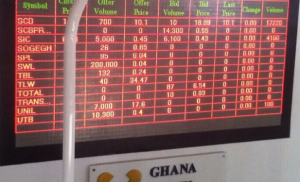Managing Director of the Ghana Stock Exchange (GSE), Ekow Afedzie, has hinted that the Exchange is targetting to increase liquidity on the equities side of the securities market to 15 percent from the current level of one percent, within five years.
Per the Capital Market Master Plan, the level of liquidity on the equities market compared with the total market capitalization has been very low over the years. The past two years have however seen an improvement in market turnover; from under one percent of market capitalization per annum to 1.1 percent in 2018 and 2019.
Addressing the media during the GSE MD’s breakfast meeting, Managing Director Mr. Afedzie said: “We want to improve liquidity from about 1 to 15 percent in five years. The only way we can do that is to increase trading on our market”.
Markets, capitalization and GDP
He further mentioned that the Exchange will also work to increase the existing market from three to five during the period: thus, the stock market, Ghana Fixed Income Market (GFIM) and the Ghana Alternative Exchange (GAX). “We are getting a fourth (Green Market) by the end of this year, and a fifth by the end of 2023.
“The market capitalization is currently 15 percent [about GH¢64.50billion] of the GDP, but we want to get to 30 percent. In most emerging markets they are way closer to 100 percent, and in some advanced markets they are even over 100 percent of GDP,” the MD said.
Trade values & volumes
The total value traded on the equities market however saw healthy growth from GH¢151.3million in 2010 to GH¢ 533.27million in 2021 – although the current value has declined for the 2019 levels of GH¢624.2million.
However, the secondary trading activities on the debt market front have seen a tremendous uptick in both number of volumes and value of transactions. From total trade values of just GH¢9.6billion in 2015, they shot up to GH¢216.04billion in 2021.
The first pillar of the Capital Market Master Plan – which targets improving the diversity of investment products and liquidity of the securities market – includes revision of the market models used and introduction of market makers with securities lending and short selling to support them.
This further seeks to promote Real Estate Investment Trusts (REITs) as well as simplify the collective investment schemes (CIS); strengthening the repo market with the introduction of international standard agreements and supporting frameworks; a comprehensive review of taxation issues and incentives in the capital market; opening up retail access to both the corporate and government bond markets and equities; and improvements to the venture capital framework.




